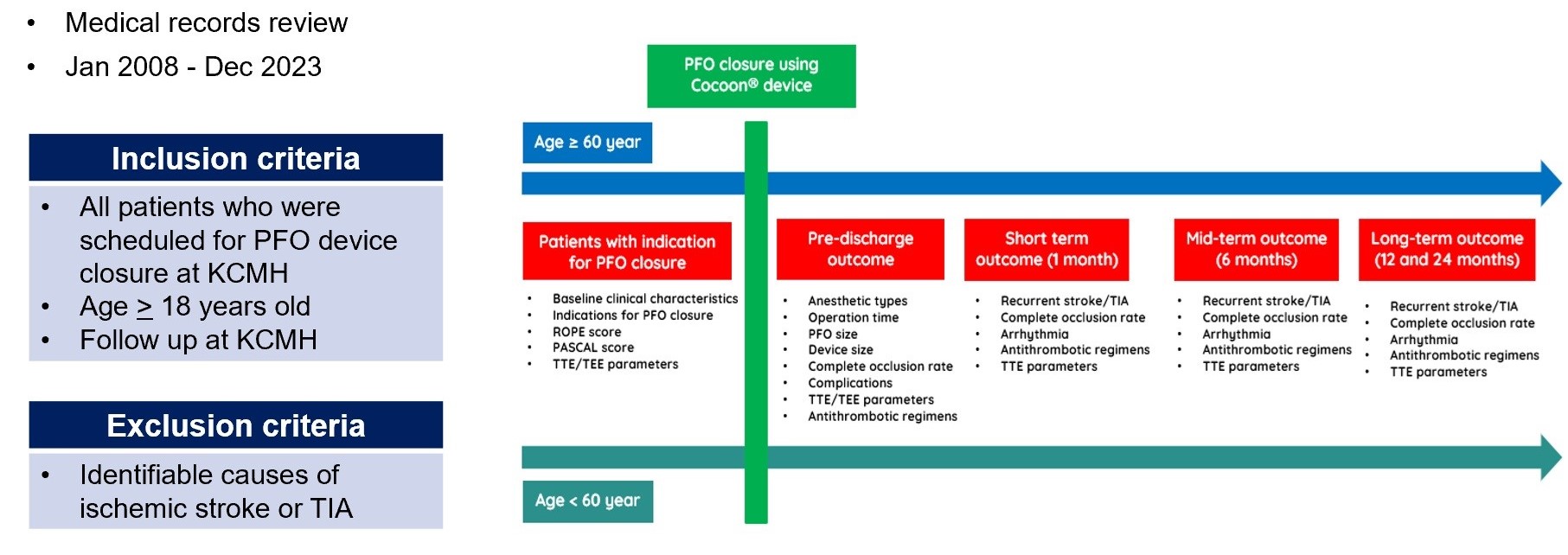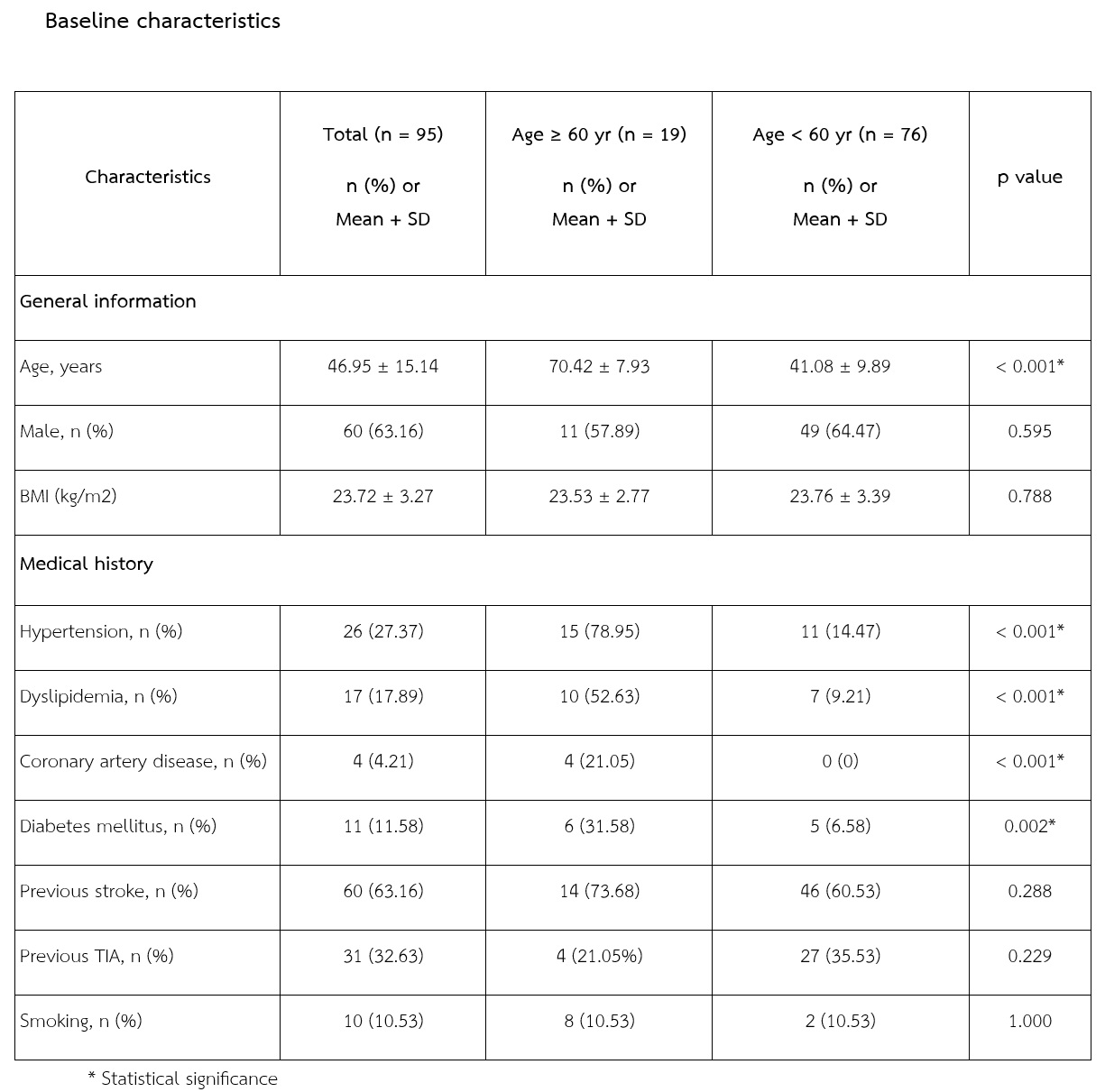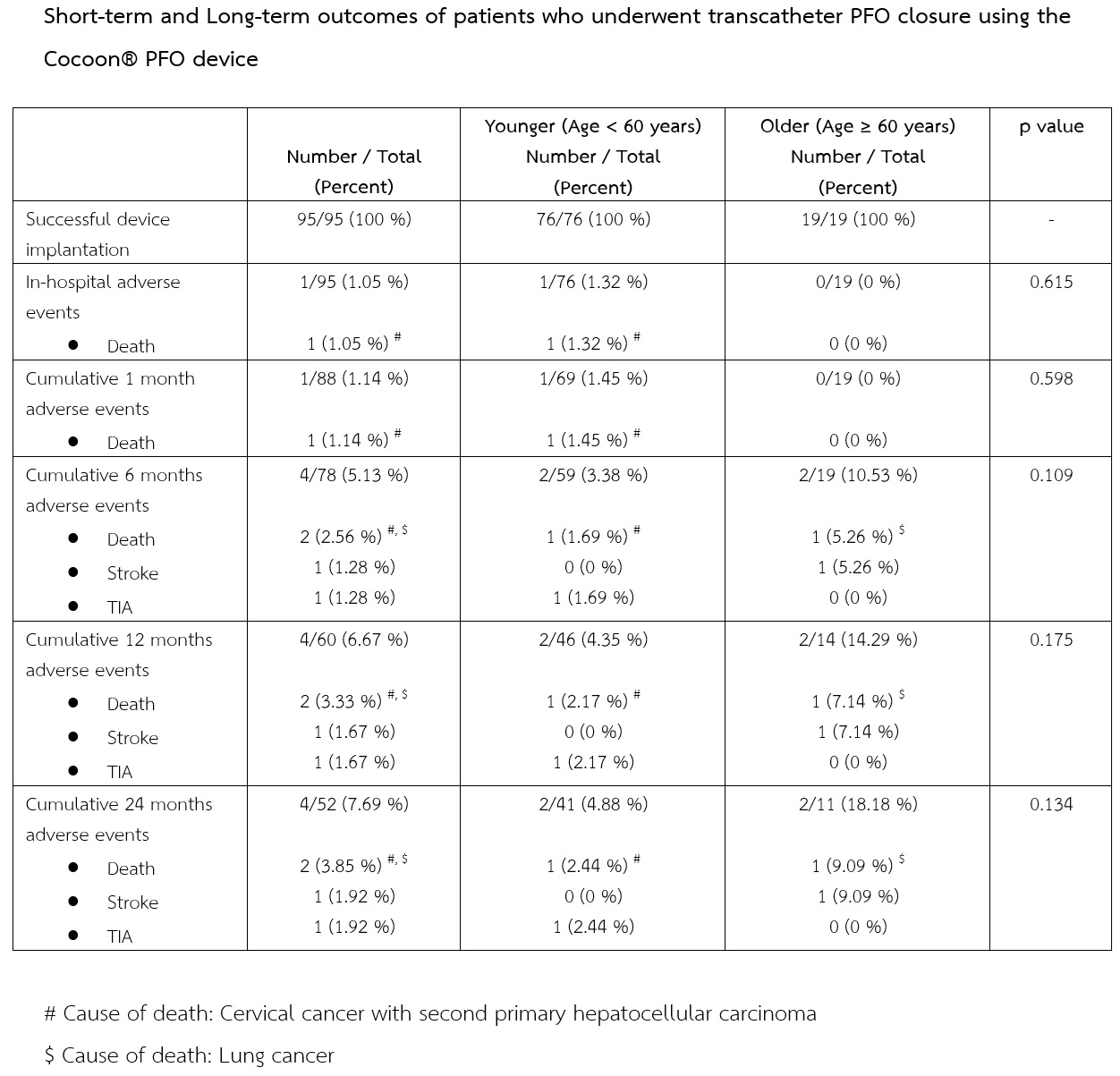Lots of interesting abstracts and cases were submitted for TCTAP 2025. Below are the accepted ones after a thorough review by our official reviewers. Don’t miss the opportunity to expand your knowledge and interact with authors as well as virtual participants by sharing your opinion in the comment section!
TCTAP A-077
Outcomes of Transcatheter Patent Foramen Ovale Closure Using Cocoon® Patent Foramen Ovale Device in Older Patients: Single Center Experience
By Tussapon Raomanachai, Chaisiri Wanlapakorn, Vorarit Lertsuwunseri, Siriporn Athisakul, Suphot Srimahachota
Presenter
Tussapon Raomanachai
Authors
Tussapon Raomanachai1, Chaisiri Wanlapakorn1, Vorarit Lertsuwunseri1, Siriporn Athisakul1, Suphot Srimahachota1
Affiliation
King Chulalongkorn Memorial Hospital, Thailand1
View Study Report
TCTAP A-077
Other Structural Interventions
Outcomes of Transcatheter Patent Foramen Ovale Closure Using Cocoon® Patent Foramen Ovale Device in Older Patients: Single Center Experience
Tussapon Raomanachai1, Chaisiri Wanlapakorn1, Vorarit Lertsuwunseri1, Siriporn Athisakul1, Suphot Srimahachota1
King Chulalongkorn Memorial Hospital, Thailand1
Background
Multiple randomized trials have demonstrated the safety and efficacy of patent foramen ovale (PFO) closure in patients with PFO-related ischemic events, especially those who have suffered cryptogenic stroke. The Cocoon® PFO closure device is a unique structural modification tool that aims to reduce the risk of major complications during transcatheter PFO closure procedures, and many cohort studies have demonstrated the device's high effectiveness and safety. However, there is limited information available regarding the outcomes of PFO closure in older patients (greater than or equal to 60 years old). We aimed to compare the frequency of adverse events and the efficacy of PFO closure in preventing stroke or TIA during hospitalization and at 1, 6, 12, and 24 months post-procedure between two age groups: patients younger than 60 years old and those 60 years old or older.
Methods
A retrospective cohort study was conducted from January 2008 to December 2023 in the King Chulalongkorn Memorial Hospital. We enrolled a consecutive series of patients who had undergone transcatheter closure of PFO. Patients with demonstrably identifiable causes of ischemic stroke or transient ischemic attack (TIA) were excluded. The patients were divided in to 2 groups: patients younger than 60 and those who are 60 years old or above. The following data was retrieved from electronic medical records for each patient: baseline characteristics, Risk of Paradoxical Embolism (RoPE) score, Simplified PFO-Associated Stroke Causal Likelihood (PASCAL) Classification System score, echocardiographic findings, details of the closure procedure, in-hospital outcomes, and follow-up outcomes at 1, 6, 12, and 24 months. The adverse events included with all-cause death, cardiac tamponade, vascular complications requiring surgical repair, access site hematoma or hemorrhage, device dislodgement, device embolization, recurrent stroke, recurrent TIA and newly developed atrial fibrillation. The success rate of the procedure was defined as the absence of microbubbles in the NSS agitation test during transthoracic and/or transesophageal echocardiograms.


Results
Out of 95 patients, the study cohort comprised 76 patients (80 %) below 60 years old, while the remaining 19 patients (20 %) were 60 years old or above. No significant difference was observed in the occurrence of adverse events between older and younger patients during their hospital stay (0 % vs. 1.32 %, p = 0.615). The only adverse event is that one patient in the younger group died from cancer. After a period of six months, the group of older patients experienced two adverse events. One patient in this group died as a result of lung cancer. In addition, another patient in the older group had a recurrent stroke, which occurred at a rate of 5.26 %. Meanwhile, in the younger group, one patient experienced a transient ischemic attack (TIA), which occurred at a rate of 1.69 %. There was no atrial fibrillation or other adverse events were observed after 12 and 24 months of follow-up in both groups. A comparison of predicted and observed stroke events at 2 years by age showed ARR in the older group was 1.5 and ARR in the younger group was 3.76, respectively. The procedural success rates were found to be significantly high in both groups, and no significant difference was observed between them.






Conclusion
In conclusion, there was no significant differences in the incidence of adverse events during hospitalization and the subsequent 24-month follow-up between older and younger patients who underwent transcatheter PFO closure using the Cocoon® PFO device.


